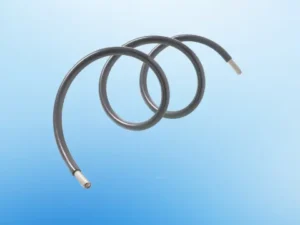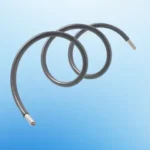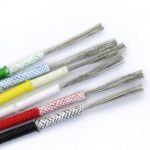In environments where radiation is a constant threat to materials and electronics, radiation-resistant cables play a vital role in ensuring long-term electrical reliability. These specialized cables are designed to maintain their electrical and mechanical integrity even when exposed to ionizing radiation such as gamma rays, X-rays, or neutron fields.

Radiation-Resistant Cables
From nuclear power plants to space missions and medical imaging systems, radiation-resistant cables are the silent backbone that keeps critical systems operating safely and continuously.
What Are Radiation-Resistant Cables?
A radiation-resistant cable (also called radiation-proof cable or nuclear cable) is an electrical cable designed to withstand high levels of radiation without degradation. Traditional insulation materials like PVC or polyethylene quickly become brittle or lose dielectric properties under radiation exposure, leading to failure.
Radiation-resistant cables, on the other hand, use advanced polymers and compounds that can absorb or neutralize radiation energy, ensuring long-term stability.
Key Characteristics and Benefits
Radiation-resistant cables are not just tough—they are engineered for mission-critical performance under the harshest conditions. Their main features include:
☢️ High Radiation Tolerance: Maintains performance under intense gamma and neutron radiation.
🔥 Thermal Stability: Can operate in high-temperature environments, often up to 200–250°C.
🧯 Flame Retardant & Halogen-Free Options: Ideal for confined or sensitive areas such as reactors or submarines.
⚡ Excellent Electrical Insulation: Prevents leakage currents even after long-term radiation exposure.
🧪 Chemical and Oil Resistance: Suitable for corrosive or high-moisture environments.
🧰 Long Service Life: Minimizes maintenance and replacement in areas with limited accessibility.
Common Materials Used in Radiation-Resistant Cables
The performance of these cables largely depends on the choice of insulation and jacket materials. Below are some commonly used compounds:
| Material | Key Advantage | Radiation Resistance Level |
|---|---|---|
| PEEK (Polyether Ether Ketone) | Outstanding mechanical strength and thermal stability | ★★★★★ |
| ETFE (Ethylene Tetrafluoroethylene) | Excellent radiation and chemical resistance | ★★★★☆ |
| Cross-linked Polyethylene (XLPE) | Economical and heat-resistant | ★★★★☆ |
| Silicone Rubber | Highly flexible and heat-stable | ★★★☆☆ |
| Polyimide (Kapton) | Thin, lightweight, and space-grade insulation | ★★★★★ |
These materials are carefully selected based on application requirements such as temperature, voltage, and total radiation dose.
Applications of Radiation-Resistant Cables
Because of their exceptional durability, radiation-resistant cables are used in the most challenging and hazardous environments:
⚙️ Nuclear Power Plants: For reactor monitoring, control, and safety systems.
🧬 Medical Equipment: In radiation therapy machines and imaging systems (CT, X-ray).
🚀 Aerospace and Space Missions: For satellite systems and spacecraft wiring exposed to cosmic radiation.
🌊 Submarine and Deep-Sea Exploration: Where both radiation and pressure resistance are critical.
🏭 Particle Accelerators and Research Labs: Supporting scientific instruments and detectors.
Design Options
Radiation-resistant cables can be customized for specific operating conditions. Some common configurations include:
Coaxial Cables – For signal transmission in radiation-prone environments.
Power Cables – High-voltage resistant for continuous operation in reactors.
Instrumentation Cables – For control and data systems in nuclear facilities.
Thermocouple Extension Cables – For temperature sensing in radiation zones.
Shielding options such as tinned copper braid or aluminum foil can also be added for EMI protection.
Choosing the Right Radiation-Resistant Cable
When selecting a cable for high-radiation environments, consider the following factors:
Total Dose Level (kGy or Mrad) – Determines required material resilience.
Operating Temperature and Voltage – Impacts insulation choice and conductor type.
Mechanical Flexibility – Important for installation and vibration resistance.
Chemical and Moisture Exposure – Affects jacket and sealing material selection.
A properly chosen cable ensures maximum service life and minimal downtime.
Conclusion
Radiation-resistant cables are critical components in nuclear, aerospace, and medical sectors, offering unmatched reliability where failure is not an option. With materials like PEEK, ETFE, and Polyimide, these cables provide superior resistance to radiation, heat, and chemicals—ensuring safe, continuous operation even under extreme conditions.
👉 Looking for dependable radiation-resistant cables? Contact TOT Wire & Cable today to find the perfect solution for your high-radiation environment.




